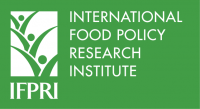
This post originally appeared on IFPRI.org .
By Francesca Edralin
Ethiopia’s rapid economic and agricultural growth over the past two decades is a well-known African success story. In 2000, Ethiopia ranked as the second-poorest country in the world , according to Oxford University’s Global Multidimensional Poverty Index. Then, thanks in large part to sustained investments in the agricultural sector, the economy grew and poverty fell. Ethiopia was the third-fastest growing country in the world from 2000 to 2018 based on GDP per capita, according to World Bank data.
The agrifood system has emerged as the backbone of this growing economy, with approximately three quarters of the labor force working in agriculture and related sectors. Ethiopia’s era of rapid agricultural transformation, however, has also presented challenges. For example, the economy is so reliant on wide scale agricultural production that the country risks overexploiting its natural resources.
In a new IFPRI book, Ethiopia's Agrifood System: Past Trends, Present Challenges, and Future Scenarios , editors Paul Dorosh and Bart Minten present a holistic analysis of the country's agricultural system and its long-term sustainability. Synthesizing decades worth of agricultural economic research, the book analyzes the past trends that have led to Ethiopia’s economic success, the current challenges from rapid development, and what’s at stake for the future of the agrifood system. Its conclusions draw on a diverse array of surveys, including those conducted by the USAID Feed the Future program, and the Household Income and Expenditure Survey and Annual Agricultural Sample Surveys of Ethiopia’s Central Statistical Agency (CSA).
The book explores the agrifood system’s impacts on Ethiopians’ livelihoods as poverty and malnutrition have fallen. Despite data suggesting Ethiopia’s economic growth will slow in the coming decade, the book says that continuing technological, educational, and infrastructural investments in the country are essential to a well-functioning and inclusive agrifood system and to further reducing poverty.
Chapters also analyze the growth of various sectors linked to the agrifood system, including input marketing, food trading, processing, and retailing. Accelerated investments in these industries are essential to support future agricultural growth, especially since food demand is steadily changing and increasing.
How can Ethiopia’s agrifood system sustain its growth while navigating environmental threats such as climate change and resource depletion? While the authors conclude that climate change will not have a drastic impact on Ethiopia’s overall food output levels, the variability of available foods will increase, while urbanization and population growth will require greater food production and land use. The expansion of intensive agriculture, for example, depends on the availability of territory in the highlands, where 92% of cereal cultivation takes place—yet there is now little land left available. In response, the authors propose considering expanding agriculture in selected areas of the lowlands, which would require restructuring existing practices and infrastructure investments in those regions.
With limited nonfarm employment in rural areas, the vast majority of Ethiopia’s labor force relies on agricultural work for income. Thus, the book argues, it is important for Ethiopia to navigate its agricultural growth while keeping environmental constraints like soil erosion and fresh water supplies in mind, especially in the highlands. Depending on long-term resource availability, Ethiopia’s economy may also be able to expand in other sectors outside of agriculture to meet rural employment needs.
Ethiopia presents a unique case study of a developing country that successfully invested in its agricultural sector and boosted its economy—but now must reevaluate those investments to maintain long-term overall growth. These experiences can provide useful examples for other countries, in Africa and elsehwere, confronting similar challenges.
Francesca Edralin is an IFPRI Communications Intern.
